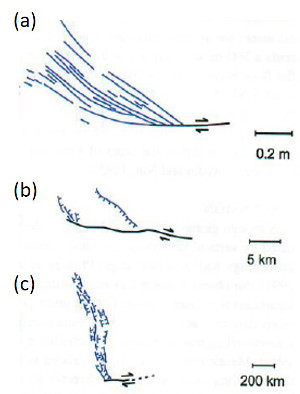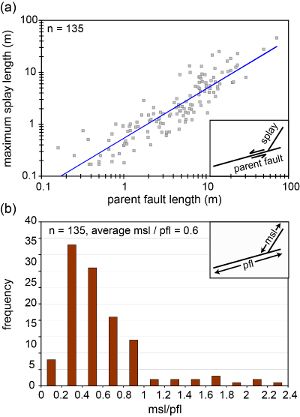| |||||||||
|
|
|||||||||
|
|
|||||||||
| Fault Splay Length Distribution | |||||||||
|
In general, parent faults and their splays occur in just about every scale as compiled in Figure 1. Data from a certain area and from a certain tectonic event appears to be a little more systematic.
Figure 2 shows parent fault and splay fracture relationships from Valley of Fire State Park, with an average ratio of about 0.6 (from de Joussineau et al., 1997). The parent faults are left-lateral strike-slip and the splays are generally right-lateral, but some may be just splay joints on the smaller end of the plot. Having the same rock type and consistent tectonic loading is likely responsible for the clustering of maximum splay length - parent fault length data.
| |||||||||
| Reference: |
|||||||||
| de Joussineau, G., Mutlu, O., Aydin, A., Pollard, D.D., 2007 Koneig, E., Aydin, A., 1998 |
|||||||||
|
Readme | About Us | Acknowledgement | How to Cite | Terms of Use | Ⓒ Rock Fracture Knowledgebase |
|||||||||

